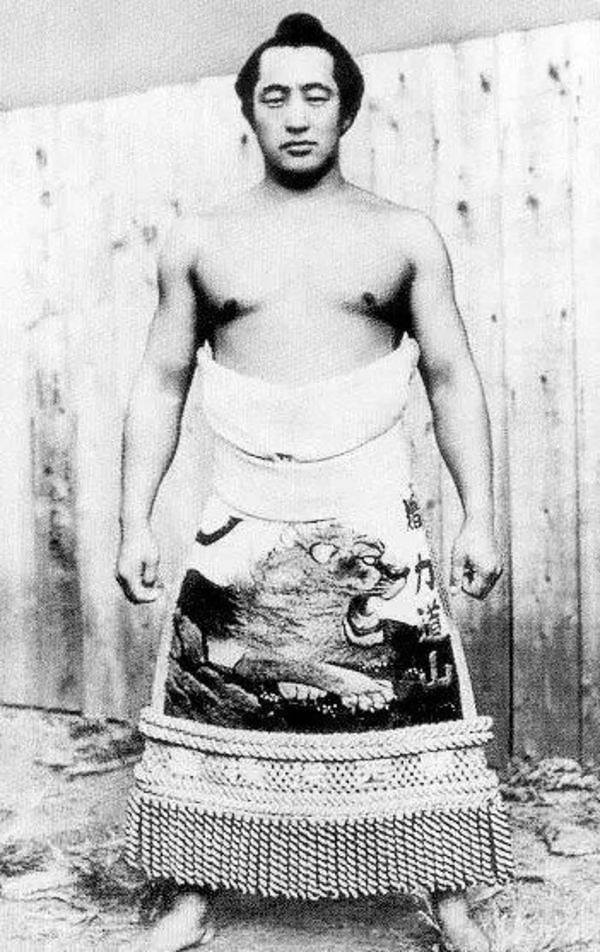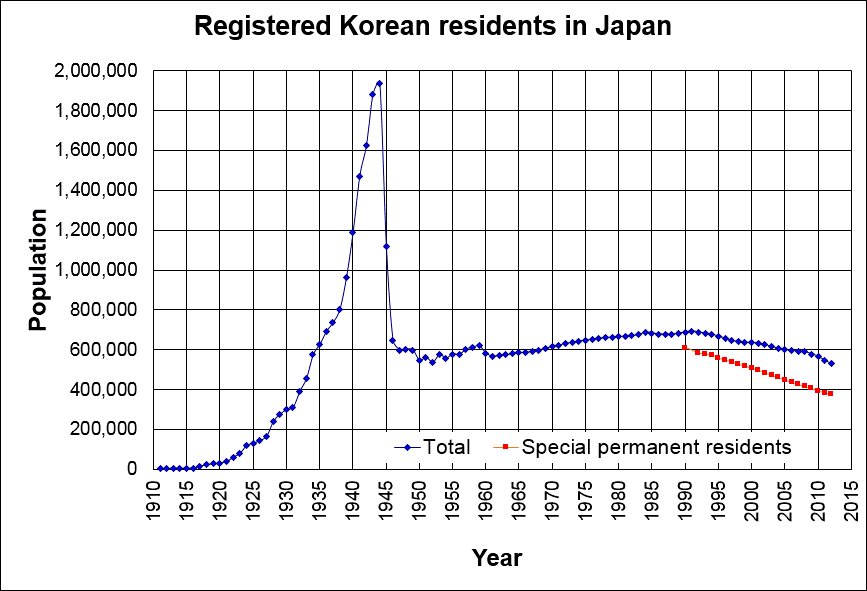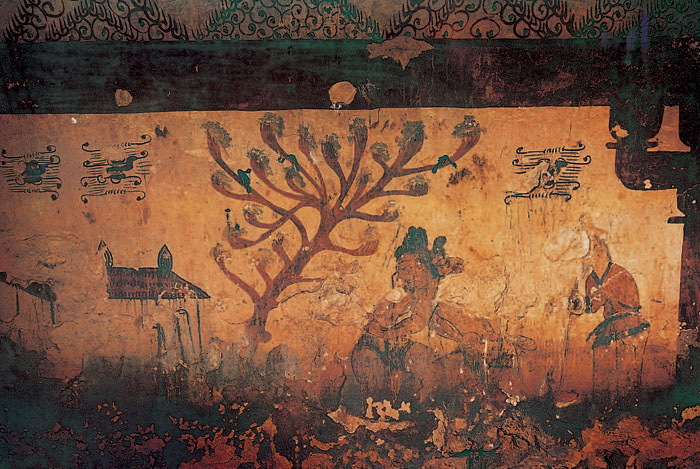|
Rikidōzan
(born Kim Sin-rak; ; November 14, 1924 – December 15, 1963), better known as Rikidōzan (), was a Korean-born Japanese wrestler who competed in sumo and professional wrestling. He was known as The Father of Puroresu, and one of the most influential persons in professional wrestling history. Initially, he had moved from his native country Korea to Japan to become a ''rikishi'' (sumo wrestler). He was credited with bringing the sport of professional wrestling to Japan at a time when the Japanese needed a local hero to emulate and was lauded as a national hero. He was inducted into the WWE Hall of Fame in 2017, becoming the first Korean inductee and the third puroresu star to be inducted after Antonio Inoki and Tatsumi Fujinami. He was killed in a street fight with a member of the Sumiyoshi-ikka in 1963. Biography Early years Rikidōzan was born Kim Sin-rak in Kankyō-nan, Chōsen (now South Hamgyong, North Korea), on November 14, 1924. He was the youngest son of Kim ... [...More Info...] [...Related Items...] OR: [Wikipedia] [Google] [Baidu] |
Professional Wrestling In Japan
Professional wrestling in Japan has existed for many years. The first Japanese to involve himself in catch wrestling, the basis of traditional professional wrestling, was former sumo wrestler Sorakichi Matsuda. There were subsequent attempts before and after World War II to popularize the sport in Japan, but these generally failed until the advent of its first big star, Rikidōzan, in 1951, who became known as the "father" of the sport. Rikidōzan brought the sport to tremendous popularity with his Japanese Wrestling Association (JWA) until his murder in 1963. Following his death, professional wrestling thrived, creating a variety of personalities, promotions and styles. It has also created a mass of other cultural icons in Japan including: Antonio Inoki, Giant Baba, Jyushin "Thunder" Liger, Tiger Mask, Keiji Mutoh/The Great Muta, Mitsuharu Misawa, and Kenta Kobashi among others. Throughout the years, a number of promotions have opened and closed, but a few have persisted to re ... [...More Info...] [...Related Items...] OR: [Wikipedia] [Google] [Baidu] |
Antonio Inoki
Muhammad Hussain Inoki (born ; February 20, 1943 – October 1, 2022) was a Japanese professional wrestler, martial artist, politician, and promoter of professional wrestling and mixed martial arts. He was best known by the ring name , a homage to fellow professional wrestler Antonino Rocca. Inoki was a twelve-time professional wrestling world champion, notably being the first IWGP Heavyweight Champion and the first Asian WWF Heavyweight Champion – a reign not officially recognized by WWE. Inoki began his professional wrestling career in the 1960s for the Japan Pro Wrestling Alliance (JWA) under the tutelage of Rikidōzan. Inoki quickly became one of the most popular stars in the history of Japanese professional wrestling. He parlayed his wrestling career into becoming one of Japan's most recognizable athletes, a reputation bolstered by his 1976 fight against world champion boxer Muhammad Ali – a fight that served as a predecessor to modern day mixed martial arts. In ... [...More Info...] [...Related Items...] OR: [Wikipedia] [Google] [Baidu] |
Harold Sakata
, better known as Harold Sakata, was an American Olympic weightlifter, professional wrestler, and film actor of Japanese descent. He won a silver medal for the United States at the 1948 Summer Olympics in London in weightlifting, and later became a popular professional wrestler under the ring name Tosh Togo, wrestling primarily for various National Wrestling Alliance territories as a tag team with Great Togo. He also wrestled extensively in Japan for All Japan Pro Wrestling, and was a one-time All Asia Tag Team Championship with Rikidōzan. On the basis of his wrestling work, he was cast in the James Bond film '' Goldfinger'' (1964) as the villain Oddjob, a role he would be closely associated with for the rest of his life. Early life Toshiyuki Sakata was born on July 1, 1920, in Holualoa, Hawaii, to Japanese-American parents who worked at a Kona coffee farm. His father Risaburo was ''issei'' (first-generation), and his mother Matsue was ''nisei''. He had ten siblings, six ... [...More Info...] [...Related Items...] OR: [Wikipedia] [Google] [Baidu] |
Japanese Heavyweight Championship
The Japanese Heavyweight Championship was a professional wrestling championship defended in the Japan Pro Wrestling Alliance. The championship belt was later used by WAR for their J-1 Heavyweight Championship, held by Genichiro Tenryu. Title history See also * Professional wrestling in Japan * List of professional wrestling promotions in Japan This is a list of professional wrestling promotions in Japan which includes both national and independent puroresu and joshi companies from the post-World War II period up to the present day. Major promotions Puroresu Joshi Independent promo ... References {{reflist, 2 External links Japanese Heavyweight Title at wrestling-titles.com Heavyweight wrestling championships National professional wrestling championships ... [...More Info...] [...Related Items...] OR: [Wikipedia] [Google] [Baidu] |
WWE Hall Of Fame
The WWE Hall of Fame is a hall of fame which honors professional wrestlers and professional wrestling personalities maintained by WWE. Originally known as the "WWF Hall of Fame", it was created in 1993 when André the Giant was posthumously inducted with a video package as the sole inductee that year. The 1994 and 1995 ceremonies were held in conjunction with the annual King of the Ring pay-per-view events and the 1996 ceremony was held with the Survivor Series event. After an eight-year hiatus and after the World Wrestling Federation (WWF) had been renamed to World Wrestling Entertainment (WWE) in 2002, the promotion relaunched the Hall of Fame in 2004 and has held the ceremonies in conjunction with WrestleMania ever since. Since 2005, portions of the induction ceremonies have aired on television and since 2014, the entire ceremonies have aired on the WWE Network, which was extended to Peacock in 2021 after the American version of the WWE Network merged under Peacock that year. ... [...More Info...] [...Related Items...] OR: [Wikipedia] [Google] [Baidu] |
Azumafuji
was a Japanese professional sumo wrestler from Taitō, Tokyo. He was the sport's 40th ''yokozuna'', and later a professional wrestler. Sumo career His real name was . He made professional debut in January 1936, joining Takasago stable. He was promoted to the top ''makuuchi'' division in May 1943. On the sixth day of the November 1944 tournament, he defeated ''yokozuna'' Futabayama, the last wrestler ever to do so as Futabayama pulled out of the tournament the next day and only fought one more bout before his retirement. Azumafuji was promoted to '' ōzeki'' in June 1945 on the strength of two runner-up performances. He won his first top division championship in May 1948, and was promoted to the top ''yokozuna'' rank in October of that year after finishing as runner-up. Going against historical trends, he managed to win his debut ''yokozuna'' tournament, in January 1949. On the 12th day of the September 1951 tournament, Azumafuji recorded an '' azukari'', or hold, a rare resu ... [...More Info...] [...Related Items...] OR: [Wikipedia] [Google] [Baidu] |
Rikishi
A , or, more colloquially, , is a professional sumo wrestler. follow and live by the centuries-old rules of the sumo profession, with most coming from Japan, the only country where sumo is practiced professionally. Participation in official tournaments () is the only means of marking achievement in sumo, with the rank of an individual based solely on official wins. The number of active peaked at 943 in May 1994, at the height of the "Waka-Taka boom," but had declined to 665 by January 2022. Terminology In popular use, the term can mean any sumo wrestler and be an alternative term to (sumo practitioner) or the more colloquial . The two kanji characters that make up the word are "strength/power" and "gentleman/samurai"; consequently, and more idiomatically, the term can be defined as "a gentleman of strength". Within the world of professional sumo, is used as a catch-all term for wrestlers who are in the lower, un-salaried divisions of , , and . The more prestigious t ... [...More Info...] [...Related Items...] OR: [Wikipedia] [Google] [Baidu] |
Koreans In Japan
comprise ethnic Koreans who have permanent residency status in Japan or who have become Japanese citizens, and whose immigration to Japan originated before 1945, or who are descendants of those immigrants. They are a group distinct from South Korean nationals who have emigrated to Japan after the end of World War II and the division of Korea. They currently constitute the second largest ethnic minority group in Japan after Chinese immigrants, due to many Koreans assimilating into the general Japanese population. The majority of Koreans in Japan are , often known simply as , who are ethnic Korean permanent residents of Japan. The term Zainichi Korean refers only to long-term Korean residents of Japan who trace their roots to Korea under Japanese rule, distinguishing them from the later wave of Korean migrants who came mostly in the 1980s, and from pre-modern immigrants dating back to antiquity who may themselves be the ancestors of the Japanese people. The Japanese word "Zainic ... [...More Info...] [...Related Items...] OR: [Wikipedia] [Google] [Baidu] |
Nishonoseki Stable (1911–2013)
(1911–2013) was a stable of sumo wrestlers, part of the Nishonoseki group of stables (''ichimon'') named after it. It first appeared in the late eighteenth century and was re-established in 1935 by the 32nd ''yokozuna'' Tamanishiki while still active. The former ''ōzeki'' Saganohana produced the stable's greatest wrestler, ''yokozuna'' Taihō, who won a record for the time of 32 ''yūshō'' or tournament championships between 1961 and 1971. The stable's last head coach, former ''sekiwake'' Kongō, took charge in 1976, when he was adopted by the widow of the previous head. He was also on the board of directors of the Japan Sumo Association. The stable's fortunes declined in later years. It had no ''sekitori'' wrestlers after the retirement of Daizen in 2003 and at the end had just three active wrestlers, all in ''sandanme'' or below (and one of whom, Kasachikara, was 41 years old, and the second oldest active wrestler in sumo). The naturalisation of a Chinese born rik ... [...More Info...] [...Related Items...] OR: [Wikipedia] [Google] [Baidu] |
Professional Wrestling
Professional wrestling is a form of theater that revolves around staged wrestling matches. The mock combat is performed in a ring similar to the kind used in boxing, and the dramatic aspects of pro wrestling may be performed both in the ring or—as in televised wrestling shows—in backstage areas of the venue, in similar form to reality television. Professional wrestling as a form of theater evolved out of the widespread practice of match fixing among wrestlers in the early 20th century. Rather than sanction the wrestlers for their deceit as was done with boxers, the public instead came to see professional wrestling as a performance art rather than a sport. Professional wrestlers responded to the public's attitude by dispensing with verisimilitude in favor of entertainment, adding melodrama and outlandish stuntwork to their performances. Although the mock combat they performed ceased to resemble any authentic wrestling form, the wrestlers nevertheless continued to pr ... [...More Info...] [...Related Items...] OR: [Wikipedia] [Google] [Baidu] |
Sumiyoshi-ikka
The Sumiyoshi-ikka (住吉一家 "Sumiyoshi Family") is an affiliate of the Sumiyoshi-kai yakuza syndicate, based in Tokyo, Japan Japan ( ja, 日本, or , and formally , ''Nihonkoku'') is an island country in East Asia. It is situated in the northwest Pacific Ocean, and is bordered on the west by the Sea of Japan, while extending from the Sea of Okhotsk in the north .... Yakuza groups {{crime-org-stub ... [...More Info...] [...Related Items...] OR: [Wikipedia] [Google] [Baidu] |
Ssireum
''Ssireum'' (Hangul: ) or Korean wrestling is a folk wrestling style and traditional national sport of Korea that began in the fourth century. In the modern form each contestant wears only a belt (satba) that wraps around the waist and the thigh. The competition employs a series of techniques, which inflict little harm or injury to the opponent: opponents lock on to each other's belt, and one achieves victory by bringing any part of the opponent's body above the knee to the ground. Etymology There have been other terms for "wrestling" in Korean used alongside ''ssireum'', such as ''gakjeo'' (각저:角抵), ''gakhui'' (각희:角戱), ''gakryeok'' (각력:角力), ''gakji'' (각지:角支), ''chiuhui'' (치우희:蚩尤戱), ''sangbak'' (상박:相撲), ''jaenggyo'' (쟁교:爭交). ''Gak'' (각:角), a commonly used prefix, seems to have originated from the combative act performed by horned animals such as oxen when competing against one another for the superiority of phy ... [...More Info...] [...Related Items...] OR: [Wikipedia] [Google] [Baidu] |

.jpg)




